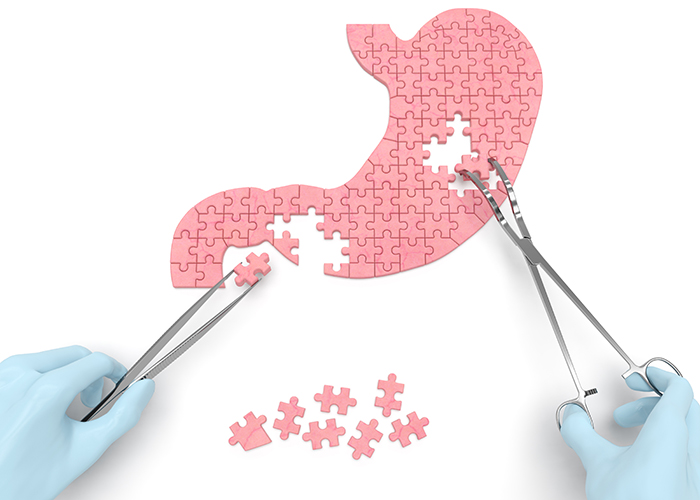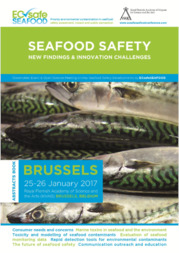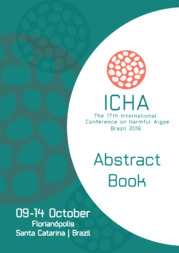Researchers simulate human digestion to detect nutrients and contaminants in fish
Researchers simulate human digestion to detect nutrients and contaminants in fish
The project studied sardines (Sardinella sp.), trouts (Onchorrynchus mykiss), sea shrimp (Litopenaeus vannamei), hard clams (Meretrix lyrata) and sea lettuce (Ulva sp.). The fish was acquired from supermarkets and commercial productions to simulate real consumption conditions.
The study revealed that fish and shellfish present a protein digestion rate above 70%, while the seaweed, 39%. The percentages represent the amount of such foods that is effectively digested by the human body.
Although the hard clams presented a high concentration of minerals, the nutrients had low bioaccessibility. For such mollusks, the bioaccessibility of macroelements such as calcium, phosphorus, potassium and iron is lower when compared with microelements such as copper, zinc and selenium.
Sardines and trouts proved to be excellent sources of the Omega 3 type of fatty acids, a fundamental nutrient for brain and heart functions. The study also revealed that the consumption of trouts, sardines, sea shrimp, hard clam and seaweed does not pose risks to health with regard to the ingestion of metals and persistent organic pollutants.
Fish safety
The Mediterranean diet is based on fish, salada, wine and olive oil - followed by the Portuguese and other countries by the Mediterranean Sea region - is recognized as one of the healthiest of the world. The fish contain enormous amounts of essential nutrients, such as vitamins, proteins of high biological value (high digestibility), Omega-3 fatty acids and minerals.
Nutritionists recommend consuming fish two to three times a week. On the other hand, because they are aquatic species, they can accumulate harmful substances that are present in their environment, such as metals, toxins, residue of agricultural defensives, and other types of organic pollutants. However, the key question is to discover if the amount of contaminants and nutrients present in the food represents a benefit or a risk to consumers. “Quantifying the bioaccessibility of nutrients and contaminants can make the assessment of risks or benefits associated with fish consumption more realistic”, asserts Fabíola Fogaça, a researcher from the Bioaccessibility Laboratory at Embrapa Food Technology.
The concentration of contaminants and nutrients in foods may not be reflected in their bioaccessibility and oral bioavailability, that is, the body will not necessarily absorb the entire amount of nutrients or contaminants found in foods. Bioaccessible can be defined as the portion of the compound the food releases into the gastrointestinal fluid after digestion that becomes available for absorption by the intestinal mucous membrane. Bioaccessibility explains how the food behaves after ingestion and which effects it can cause in the human body. Therefore, bioaccessibility analysis is currently one of the methods that precede in vivo clinical trials (with test animals or human beings), contributing to food safety and quality for consumers.
Consumption hits high
Fish is one of most negotiated food commodities in the whole world, moving approximately 142 billion dollars in 2016. Portugal is the third largest consumer of fish per capita in the world and the largest in the Union European, with an average of 55 kilos of fish a year per inhabitant. In Brazil, even though it varies from one region to the other, the consumption average is only ten kilos a year, an indicator that is far below the 12 kilos recommended by the World Health Organization (WHO). In the North and Northeastern regions of the country, fish consumption is significantly higher than in the Mid-South region, whose annual average is five kilos per inhabitant, according to statistics by the Food and Agriculture Organization of the United Nations (FAO).
The researcher Fabíola Fogaça conducted her research at IPMA's Division of Aquaculture, Valorization and Bioprospection, in partnership with the Porto Higher Institute of Engineering Chemistry and Technology Network's Associated Laboratory for Green Chemistry(Requimte/LAQV), the National Health Institute Doutor Ricardo Jorge (Insa) and the University of Lisbon College of Sciences and Technology's Laboratory of Atomic Physics (Ulisboa), for almost two years of postdoctoral training by Embrapa's Visiting Scientists Program.
A primeira fase consistiu no acompanhamento de análises e experiências para aprendizado das técnicas e práticas realizadas em espécies de pescado portuguesas: sardinha, truta, ameijoas, camarão marinho e alga marinha.
Simulation of the digestive system
This was followed by in vitro tests (in laboratory) to simulate fish digestion in a static model, with the aim of identifying what becomes bioaccessible in the body in terms of nutrients (minerals and fatty acids) and contaminants (metals and aromatic polycyclic hydrocarbons). The static digestion method uses test tubes to simulate digestion in the mouth, stomach and small intestine, with the advantage of not exposing humans or animals to contaminants.
Digestion is only one of the stages of bioaccessibility, which should be followed by analyses that determine the concentrations of the elements before and after the in vitro simulation to calculate the bioaccessible percentage. “Bioaccessibility, with high performance analytical methods, has proved to be adequate in studies for the quality control of animal products based on the analysis of threats and residues”, Fogaça reports.
This methodology reduces the cost of research by replacing the use of animals as experimental models. On the other hand, because it is a relatively new method, it requires many tests for validation. Specific tools to determine the main nutrients and contaminants in each food need to be developed to allow the assessment of risks and benefits associated with their consumption.
“Each type of fish required adjustments to mineral salt and enzyme concentrations in the simulation of the gastrointestinal tract, something that the human body does autonomously. It is not easy to simulate the human metabolism in vitro. We work on the basis of trial and error until we can get close to reality”, the researcher narrates.
The analyses indicated that the mollusks have a high mineral concentration because they are filter feeders, having accumulated impurities that are present in the sea water, but their consumption does not pose risks to health, once the bioaccessibility of such elements was very low: 0% for calcium and potassium; 10% for zinc; 20% for mercury and 40% for selenium, that is, the human body could only absorb 40% of the total selenium found in the clams.
Meanwhile in trouts there was higher bioaccessibility: 80% for arsenic and 40% to 60% for selenium. For sea shrimp, it was 80% for arsenic and 20% for calcium and phosphorus. “We use very sensitive equipment and, fortunately, we could not find any levels of contaminant above what European legislation allows”, Fogaça underscores.
According to her, there is also no risk associated with the consumption of trouts, sardines, sea shrimp, hard clams and seaweed with regard to the toxic elements assessed, warning against the consumption of more than two weekly portions of fried sardines or toasted seaweed because of their higher arsenic content. Sardines and trouts proved to be excellent sources of the Omega 3 type of fatty acids.
A laboratory to simulate digestionIn 2016, Embrapa Food Technology implemented the Bioaccessibility Laboratory, coordinated by the researcher Flávia Gomes. Since then, the Unit holds bioaccessibility analyses of foods based on the static model of digestion (mouth to anus). In vitro tests with the use of this simulator of the gastrointestinal system is the first step to obtain a more precise answer regarding the impact of the consumption of certain foods on health. “With this model, we managed to identify small molecules (metabolites) formed at the time of digestion. The analysis of such molecules reveals how the food reaches every stage until the end of the digestion process”, Gomes states. The next step is to apply the dynamic model with interconnected stages of digestion, and expand the partnerships with universities and national and international research centers for the (in vivo) clinical trials with test animals and humans. In recent years, the Bioaccessibility Laboratory team has been working in bioaccessibility analyses to assess the functional activity of fruits from Brazilian biodiversity and agroindustrial waste. More recently, it was integrated into a large national project for the fish production chain, BRS Aqua, which is funded by Funtec, a fund from the Brazilian Development Bank (BNDES). |
Translation: Mariana Medeiros
Aline Bastos (MTb 31.779/RJ)
Embrapa Food Technology
Press inquiries
agroindustria-de-alimentos.imprensa@embrapa.br
Phone number: (21) 3988-9739
Further information on the topic
Citizen Attention Service (SAC)
www.embrapa.br/contact-us/sac/





